Large dogs tend to do more of everything, whether that’s drooling or shedding loose fur. But if you’d prefer a big dog that doesn’t salivate to excess and controls its shedding, what dogs could meet those criteria? Here’s the list:
- Briard Dog
- Standard Poodle
- Afghan Hound
- German Shorthaired Pointer
- Newfypoo
- Airedale Terrier
- Giant Schnauzer
- Cane Corso
- Irish Water Spaniel
Every dog drools, but the following breeds don’t tend to drool much despite their gargantuan size. They also maintain a low shedding profile so your home isn’t constantly covered in mountains of fur. Let’s take a closer look at these extraordinary breeds!
1. Briard Dog
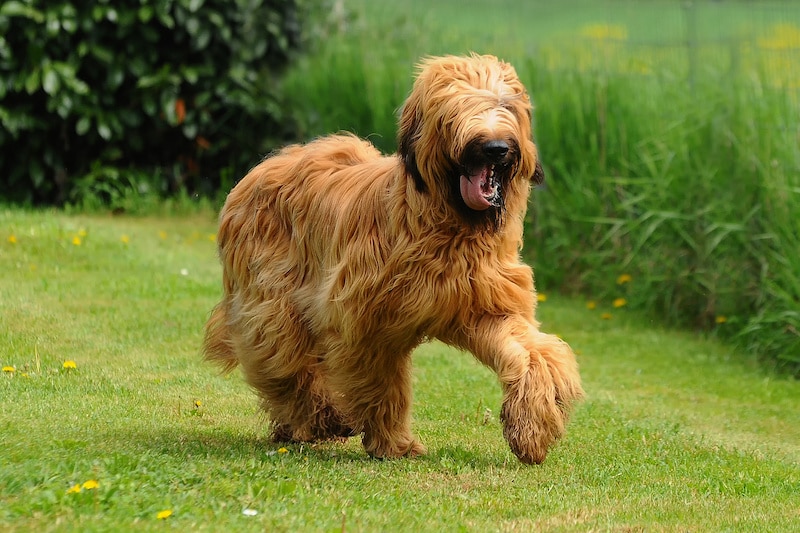
- Shedding Level: 1/5 (low)
- Grooming Effort: 5/5 (high)
Starting the list is the Briard Dog or the Berger de Brie, a French Shepherd breed.
Reaching an average height of 27 inches in maturity and weighing up to 90 pounds (for males), the Briard is certainly one large canine.
He’s surprisingly low-shedding, though! That’s achievable due to the Briard Dog’s long, coarse fur.
Dogs with wiry coats are generally lower-shedding, even though you must brush them frequently to prevent knots and tangles.
The Briard Dog has a low proclivity to drooling too. Considering his absolutely massive size, a low rate of drooling is truly a blessing.
With this breed’s bright, confident, and smart personality, the Briard Dog is an excellent companion all around.
2. Standard Poodle
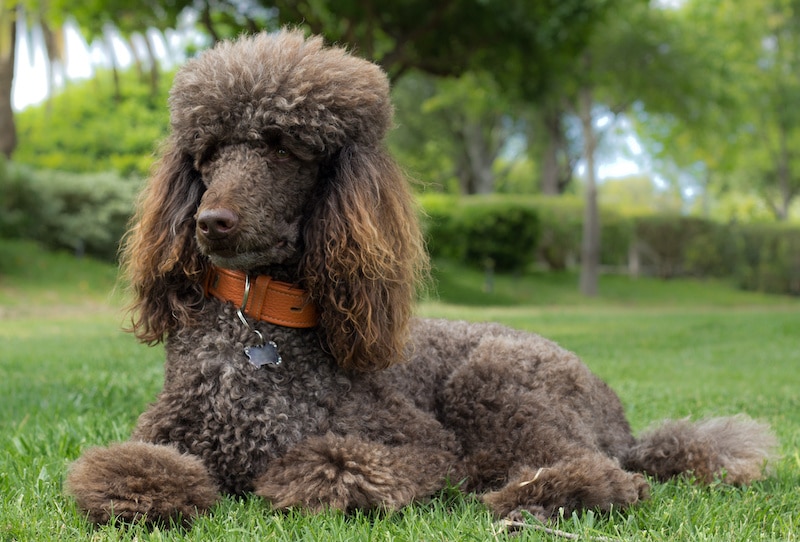
- Shedding Level: 1/5 (very low)
- Grooming Effort: 5/5 (very high)
Poodles aren’t as small as you think, especially the Standard Poodle. This dog is about 26 inches tall and can weigh upwards of 70 pounds.
Poodles come in various sizes, but all shed minimally. That’s due to the curled, coarse coat, which is a recurring feature regardless of Poodle size.
The Poodle is even regarded as hypoallergenic, even if no dog truly prevents dander allergies.
Even better, the Standard Poodle is a low-drooling breed.
Since you won’t have to spend so much time mopping up puddles of spit or vacuuming piles of hair, you shouldn’t struggle to keep up with the Standard Poodle’s grooming requirements.
The dog needs regular brushing to keep its curled coat tangle-free. Plus, you can trim your Standard Poodle in dozens of different ways depending on if yours is a show dog or just a casual pup.
3. Afghan Hound
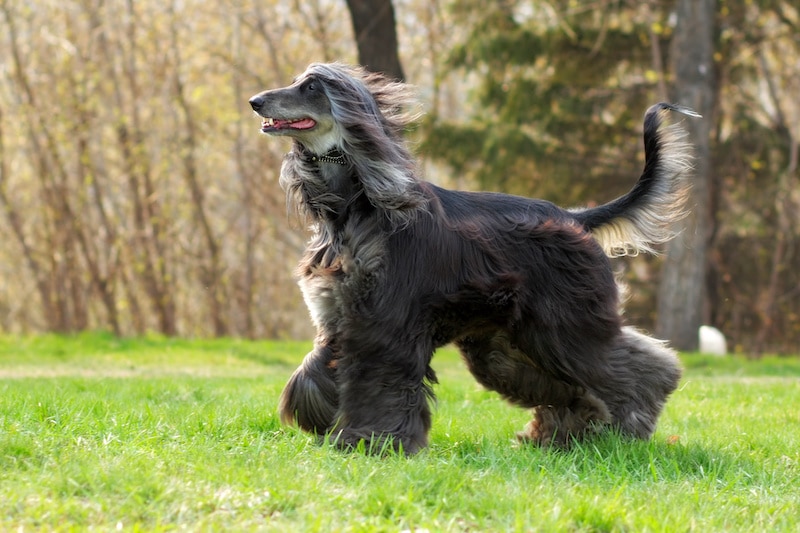
- Shedding Level: 1/5 (very low)
- Grooming Effort: 4/5 (high)
Beautiful, refined, tall, and stately, the Afghan Hound is one of those dog breeds that turns heads wherever she goes.
Since her long hair and drool wouldn’t mix particularly well, it’s a good thing this majestic breed from Afghanistan doesn’t drool much at all.
She’s also a low shedder, and that in part has to do with the longer coat length.
To explain why that is, I have to briefly touch on how a dog’s fur grows. That growth occurs across four stages, with the last stage culminating in the hair being released.
Shorter-haired breeds go through the four hair stages at a rapid rate and tend to shed more than their longer-furred counterparts like the elegant Afghan Hound.
This breed is on the smaller side of large dogs, weighing about 75 pounds (for both genders) in maturity and standing at 29 feet tall max.
I’d recommend regular brushing and bathing to prevent knots, tangles, dirt, and debris. The Afghan Hound’s coat will shine and you’ll have a dog you’re undeniably proud of!
4. German Shorthaired Pointer
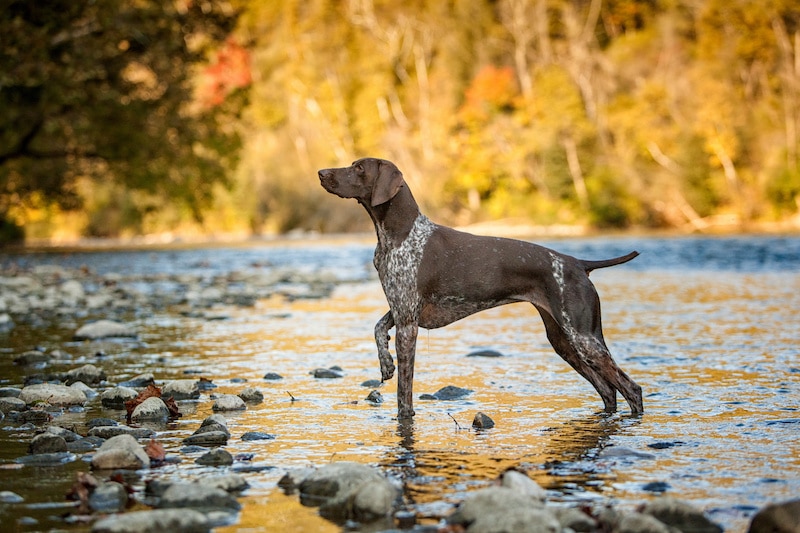
- Shedding Level: 2/5 (low)
- Grooming Effort: 1/5 (very low)
The German Shorthaired Pointer or GSP weighs about 70 pounds and is roughly 25 inches tall. Originally bred as a German hunting dog in the latter part of the 1800s, this active breed is a beloved companion today.
Part of what makes the GSP such a wanted breed is that the dog barely sheds. He is short-haired and double-coated, but despite those facts, the GSP won’t leave your home a mess. That’s great news for you!
Further, unless he’s drinking or eating, the GSP has its slobber under control. Just don’t tantalize your dog too much before mealtime and you won’t be cleaning up drool.
Due to its short coat, keeping your German Shorthaired Pointer well-groomed is exceptionally simple. That said, it’s still best to commit to daily brushing to keep the coat and skin healthy (brushing spreads skin oils) and shedding manageable.
5. Newfypoo
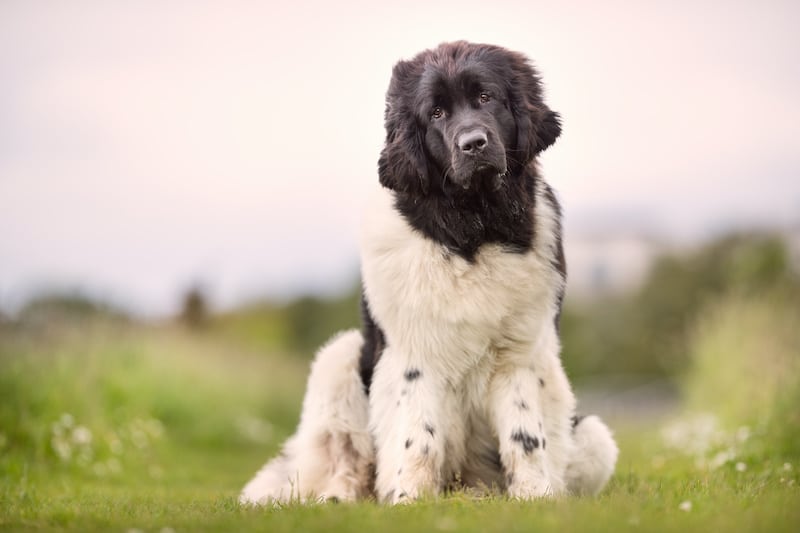
- Shedding Level: 2/5 (low)
- Grooming Effort: 4/5 (high)
Newfypoo, Newfiedoodle, Poofoundland, Newfoundlandoodle, Newdle, Newfoundlandpoo, Newfiedoo…the nicknames for this hybrid breed go on and on.
Here’s what you need to know. A Newfypoo is a cross between a Newfoundland Dog and a Poodle. They stand at about 28 inches tall and can weigh up to 130 pounds if the hybrid breed is more Newfoundland than Poodle.
The Newfypoos that have more Poodle lineage are the lowest-shedding. You already know why the Poodle doesn’t shed much, and a Newfypoo will carry over that trait as well.
If your Newfypoo is more Newfoundland, then you should be prepared to clean up more dog hair than usual.
Controlling the dog’s shedding in either scenario is best done with a slicker brush. You should be ready to comb your dog every day.
At least you won’t have to worry about drooling. Whether the Newfypoo is more Newfoundland or Poodle, it’s considered a breed that barely drools.
6. Airedale Terrier
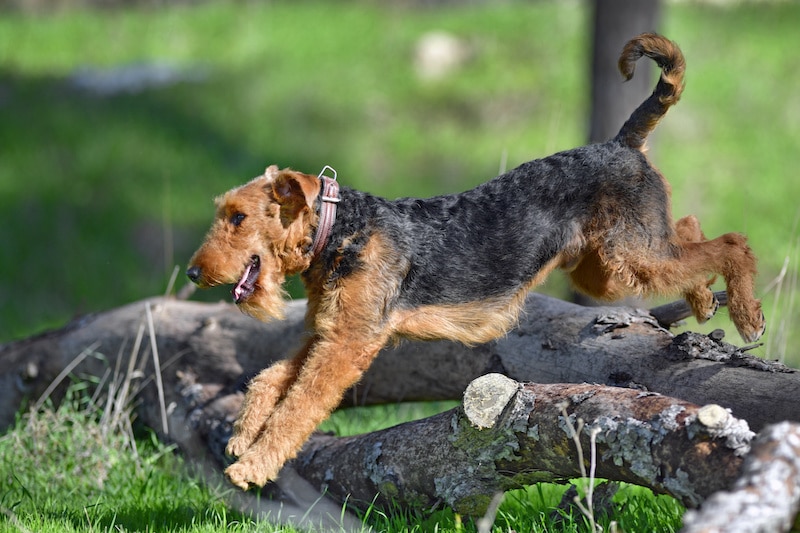
- Shedding Level: 2/5 (low)
- Grooming Effort: 4/5 (high)
The biggest Terrier on the block is the Airedale Terrier, which stands at a proud 24 inches tall and weighs about 65 pounds in maturity.
This English dog is nicknamed the Waterside Terrier or Bingley Terrier. With its long muzzle and coarse fur, the Airedale Terrier certainly stands out.
It’s that same coarse fur that makes the Airedale Terrier such a low-shedding breed despite its size.
The Airedale Terrier is double-coated and thus will blow its coat ahead of the summer and winter. However, the rate of shedding here is not so out of control that you’ll struggle with house maintenance.
Keeping your Airedale Terrier groomed and trimmed (or hand stripped if you prefer) will prevent it from shedding too much and limit the coat’s scruffiness as well.
With the breed’s low drooling proclivity, the Airedale Terrier could be just the four-legged friend you’ve been looking for.
7. Giant Schnauzer
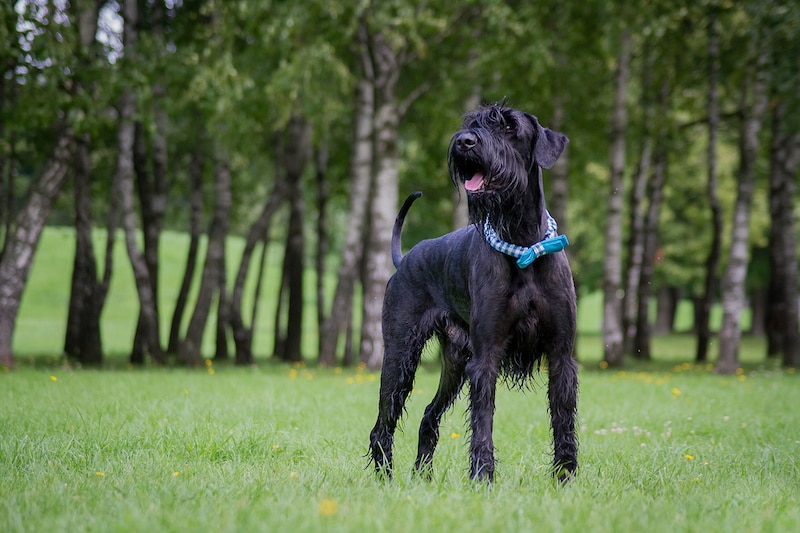
- Shedding Level: 2/5 (low)
- Grooming Effort: 3/5 (moderate)
With a name like the Giant Schnauzer, you’re probably expecting a big dog. And you shouldn’t be disappointed, as this breed from Germany weighs about 110 pounds and is roughly 28 inches tall.
Schnauzers as a whole are very low-shedding. Due to the massive size difference though, obviously, you would expect that a Giant Schnauzer would shed more than a Miniature Schnauzer.
All it takes is comparing the Giant Schnauzer with another large dog breed of about the same size to realize just how little the Schnauzer sheds overall.
Schnauzers are also known for containing their slobber. The Giant Schnauzer will drool here and there (it is a big dog!), but you won’t be mopping up puddles on your carpet or hard kitchen floor.
The double-coated Giant Schnauzer features wiry fur that can grow quite long unless you keep it trimmed. That’s a major part of this breed’s maintenance routine, as is frequent combing with a slicker brush to keep the long hair from becoming tangled.
8. Cane Corso
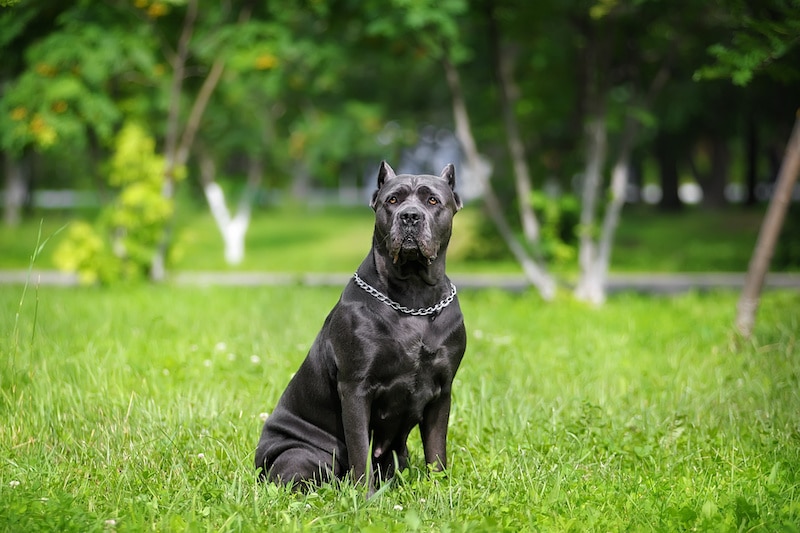
- Shedding Level: 2/5 (low)
- Grooming Effort: 1/5 (very low)
Another massive dog to consider is the Cane Corso.
This Italian guarding and hunting dog will keep your family safe, as he has quite an imposing stature. An average Cane Corso weighs 110 pounds and measures 28 inches.
With so much surface area, you may be surprised at how little the Cane Corso sheds, but it’s true!
This breed will shed seasonally, so be prepared for an uptick in floating hair for a few weeks in both the summer and the winter.
The best way to contend with this increased rate of shedding (as well as regular shedding throughout the rest of the year) is to brush your dog.
Daily brushing is ideal during seasonal shedding periods. Then, for the rest of the year, brushing every couple of days works fine.
The tighter skin of the Cane Corso compared to other Mastiff breeds keeps the dog from drooling excessively, which is just what you’re looking for.
9. Irish Water Spaniel
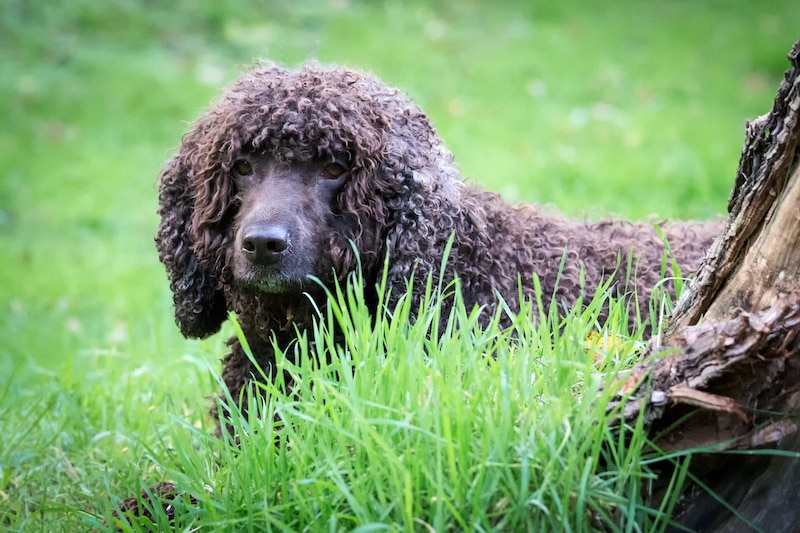
- Shedding Level: 1/5 (very low)
- Grooming Effort: 4/5 (high)
The last low-shedding, low-drooling large dog breed on my list is the Irish Water Spaniel or IWS.
The IWS was a gundog that’s excellent at catching waterfowl, hence why the breed is named after the dog’s agility in the water.
The average size of an Irish Water Spaniel is 24 inches. This breed can weigh up to 66 pounds in maturity.
The IWS doesn’t drool a lot, and it’s even regarded as hypoallergenic.
It gets even better! This breed sheds very little due to its curly, coarse coat that can trap in hair before it all comes loose.
Keeping that curly coat tidy can be a challenge, though, especially considering the coat is double-layered. With a slicker brush, you can comb through both layers of fur and spread the coat oils to the Irish Water Dog’s skin.
Bottom Line
Although large dogs don’t seem like good candidates for being low-shedding and low-drooling, this list has proven that these breeds are out there.
Keep in mind though that just because a dog isn’t supposed to shed much doesn’t always mean that’s the case.
If your large canine is shedding more than it should, it’s time to evaluate its diet (whether the dog is allergic to its food or is lacking nutrients and minerals) as well as its health (fleas and other parasites can increase shedding).
The same goes for drooling. Dogs large and small will get excited and salivate at mealtime. If your large dog is drooling excessively during other periods besides eating time though, it could be indicative of a health issue. So if you have any concerns, contact your local veterinarian.
Anyway, that’s it from me. What do you think? Have you adopted one of these dogs? Or do you know of any other large, low-shedding, low-drooling dogs I haven’t listed? Let me know below.
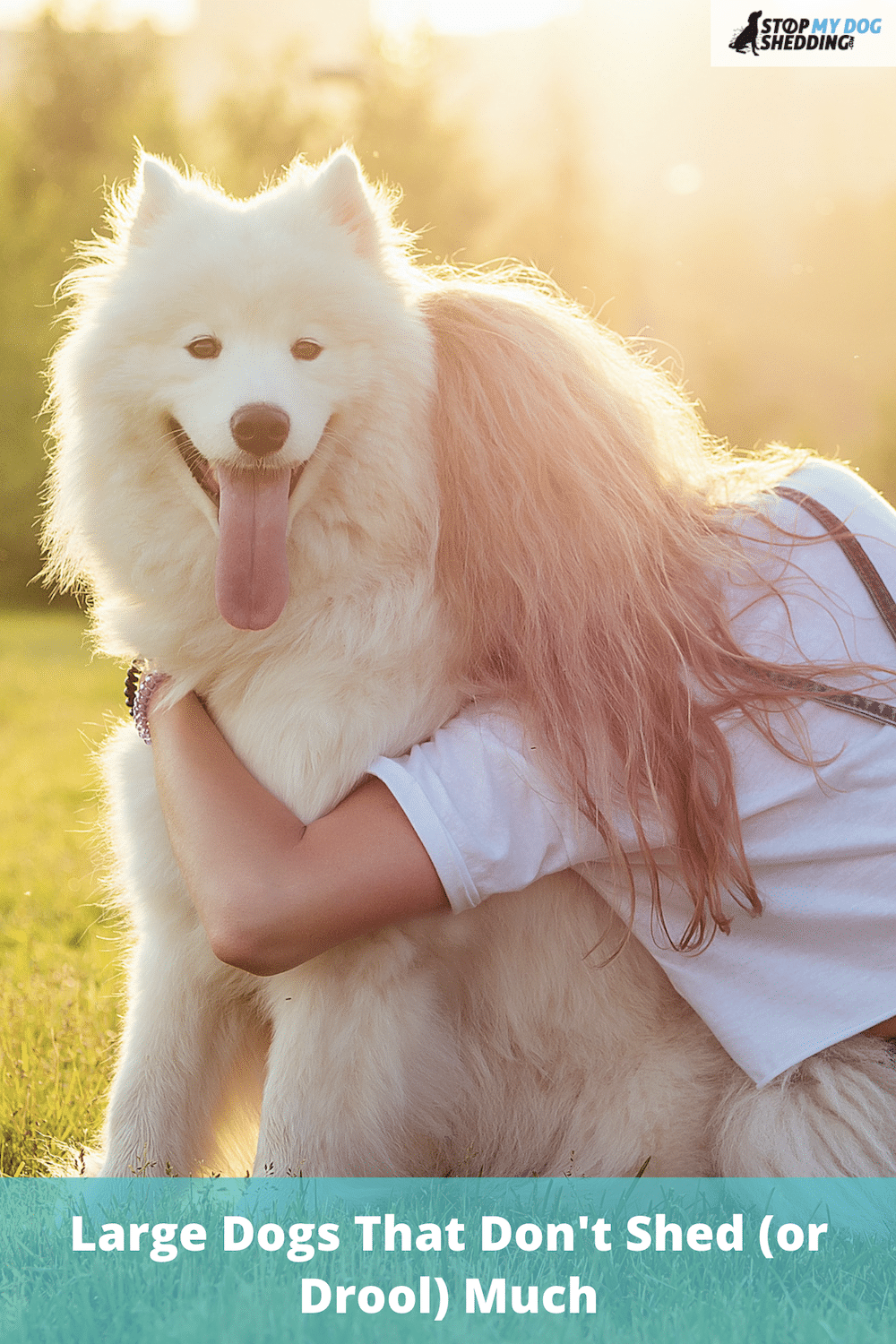

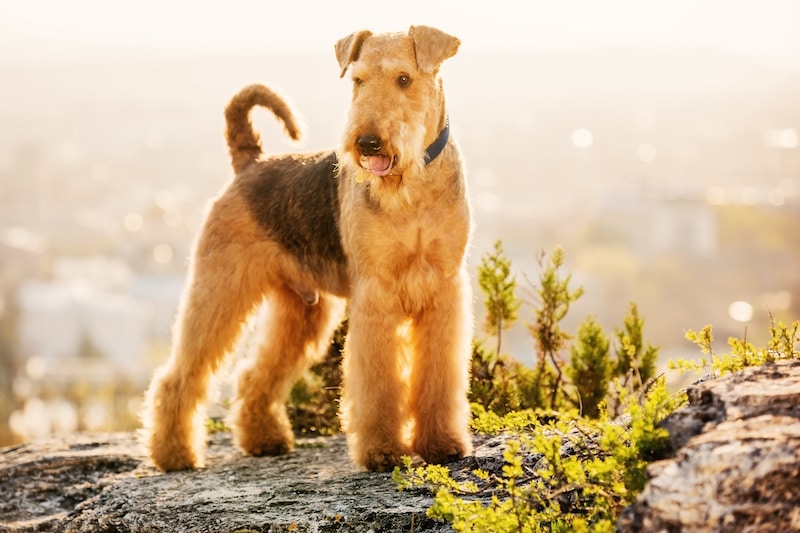










Please note: By submitting a comment using the above comment form, you confirm that you agree with the storage and handling of your data by this site as detailed in our Privacy Policy.